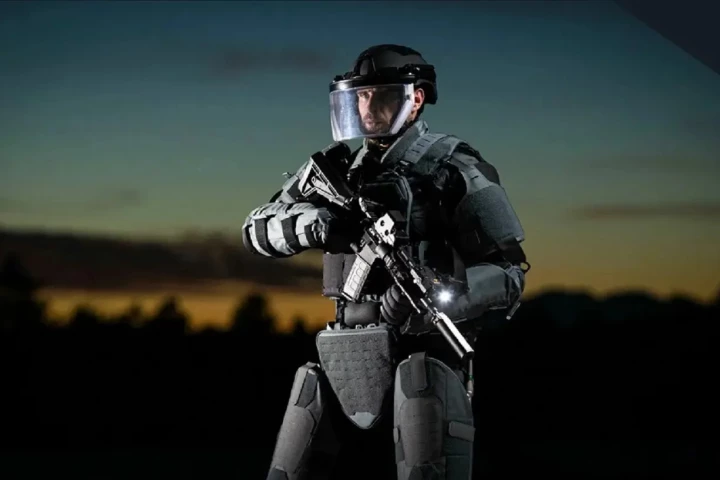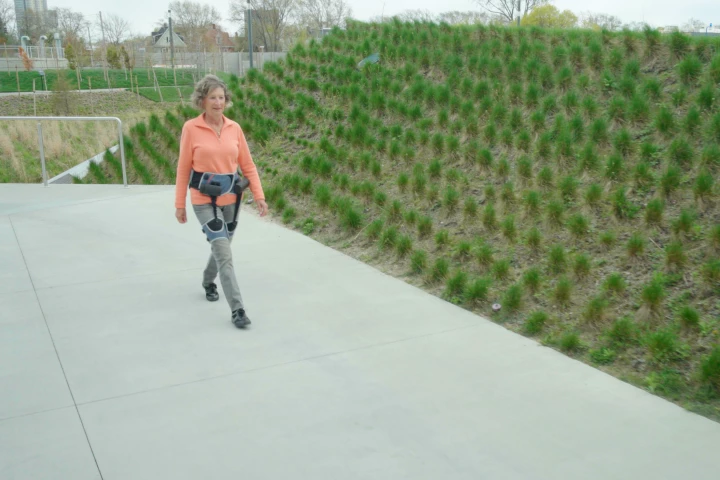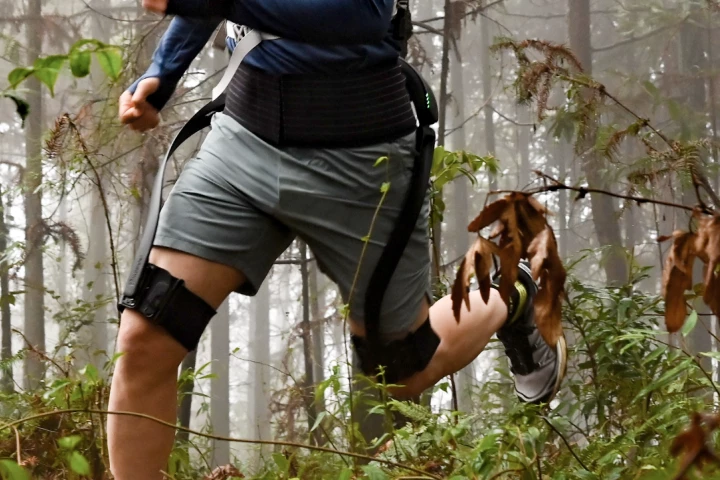Exoskeleton
-
This skyscraper's extraordinary exterior is not just for show. Designers Triptyque and Architects Office have arranged the building around a concrete exoskeleton, which provides structural support and frees up floorspace inside.
-
Hyundai Motor Company and Kia Corporation have teamed up to create the "X-ble Shoulder," a wearable robot designed to enhance industrial efficiency and reduce musculoskeletal injuries and fatigue.
-
A new soft harness system out of the Technical University of Munich works like a pair of shorts to reduce the exertion needed to walk or jog by up to 18%. The system is easy to put on and take off and holds promise for helping anyone get more mobile.
-
Exoskeletons have been helping paraplegic patients to walk for years, but the latest development from KAIST is a little different. The WalkON Suit F1 can amble over to a patient seated in a wheelchair, install itself, and get the user up and walking.
-
A new set of 'powered pants' can boost your leg strength as much as 40%, or make you feel around 30 lb (14 kg) lighter, according to Google X Labs spinout Skip. This 'mountain goat' exoskeleton aims to eliminate physical barriers to outdoor hiking.
-
This new recreational adventure exoskeleton welcomes anyone to high-level hiking, scrambling and climbing, upgrading your anatomy with an extra 900 W of leg power. It shoulders up to 83 lb of load, sprints at speeds over 16 mph and packs down small.
-
Researchers are developing a robotic exoskeleton platform that could overcome the limitations of treadmills used during the rehabilitation of the many stroke survivors who have problems walking.
-
A new robotic exoskeleton could allow people who have lost the use of their legs to stand up and even walk. It may also help get them walking unaided again, by guiding their movements and holding them up as they take part in rehabilitative therapy.
-
Most exoskeletons are big, expensive, wearable devices designed to reduce the load on body parts such as the shoulders, arms or back. The Artus is different, in that it's made to protect the fingers … and it costs less than US$110.
-
Soldiers and tactical unit police officers often have a lot of heavy gear to carry, including the ballistic body armor that they're wearing. That's where the ExoM Up-Armoured Exoskeleton is intended to come in, as it's load-reducing and bulletproof.
-
People with Parkinson's disease often develop a problem known as "gait freeze," in which their legs simply stop stepping forward as they're walking. A new exoskeleton, however, has proven to be very effective at keeping such individuals' legs going.
-
One of the most outlandish Kickstarters of 2023 is still working to empower superhuman outdoor adventurers. The Hypershell Omega exoskeleton was a $1 million Kickstarter success last year, and Hypershell is preparing to show its latest at CES 2024.
Load More











